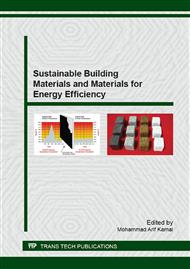p.38
p.51
p.71
p.82
p.91
p.105
p.114
p.122
p.131
Augmentation of Thermal Radiation Flux Resistance Capacity Using Autoclaved Aerated Concrete (AAC) Blocks: A Sustainable Approach
Abstract:
EIL had carried out consequence modelling for catastrophic rupture of debutanizer reflux drum of FCC unit in Haldia refinery and analyzed the mitigation measures required. The catastrophic rupture may produce thermal radiation distances due to fireball of 12.5kW/m2, which will be extending up to administrative building. It was recommended that any openings facing towards process unit should be blocked and protective measures to be taken to withstand thermal radiation of 12.5kW/m2. Therein, extensive study was carried out on the properties of the AAC blocks and it was found that they are light weight, can withstand temperature below 30000C without crumbling and have excellent fire resistance properties. Plate glass in a window can absorb some 40 to 60% of the radiation from a building fire and cannot be relied on to afford protection as large areas are liable to crack and fall out. Hence, glazed openings of the Administrative Building towards the Process Units were closed with AAC blocks of 125mm thickness. Apart from ensuring desired safety requirements and reducing spread of incident heat flux to internal parts of the building during a fire, this has also brought down the heat load on the air-conditioning system due to lower interior temperature.
Info:
Periodical:
Pages:
114-121
Citation:
Online since:
July 2015
Authors:
Keywords:
Price:
Сopyright:
© 2015 Trans Tech Publications Ltd. All Rights Reserved
Share:
Citation:


